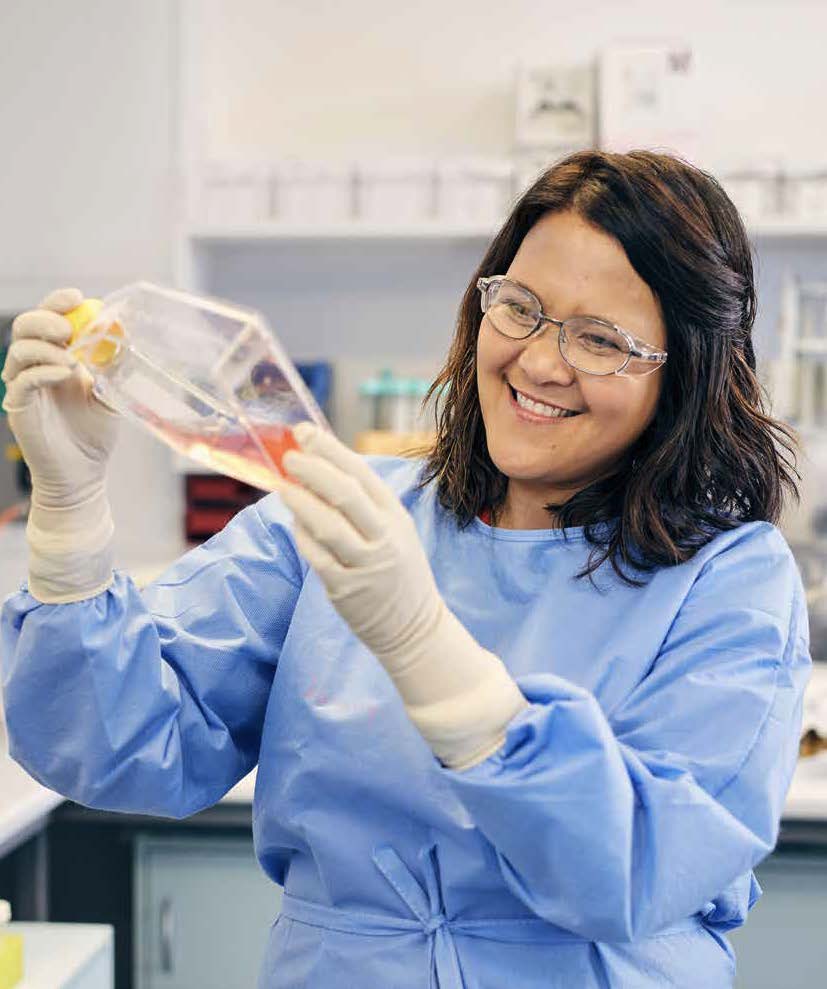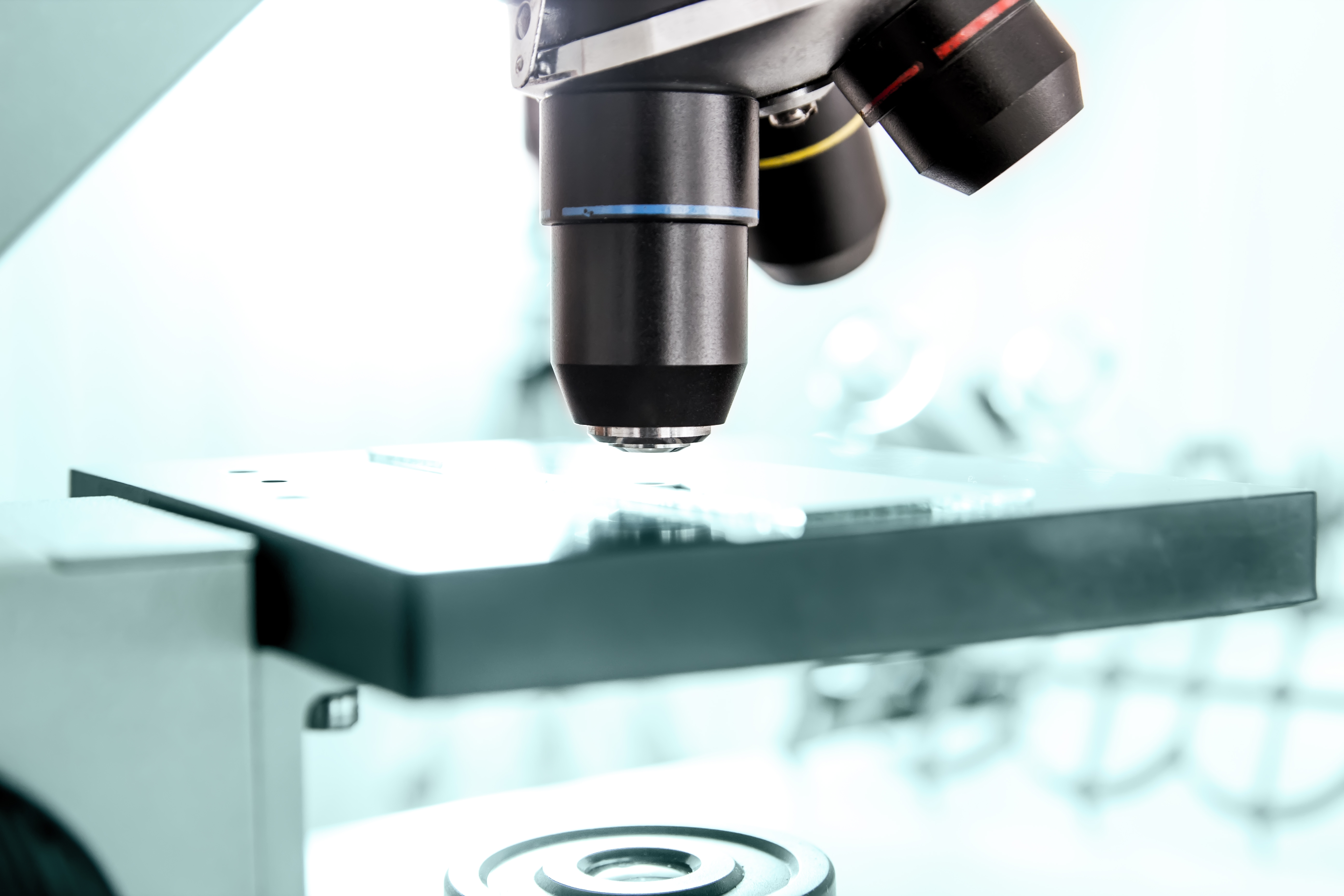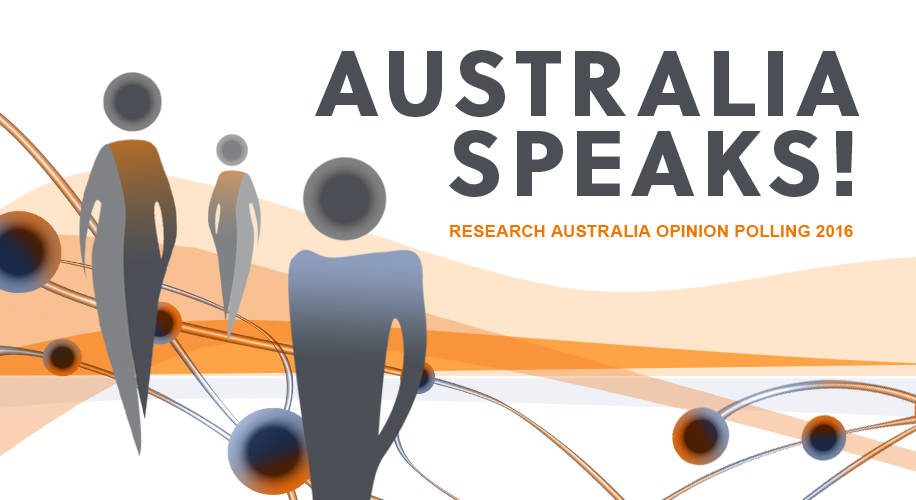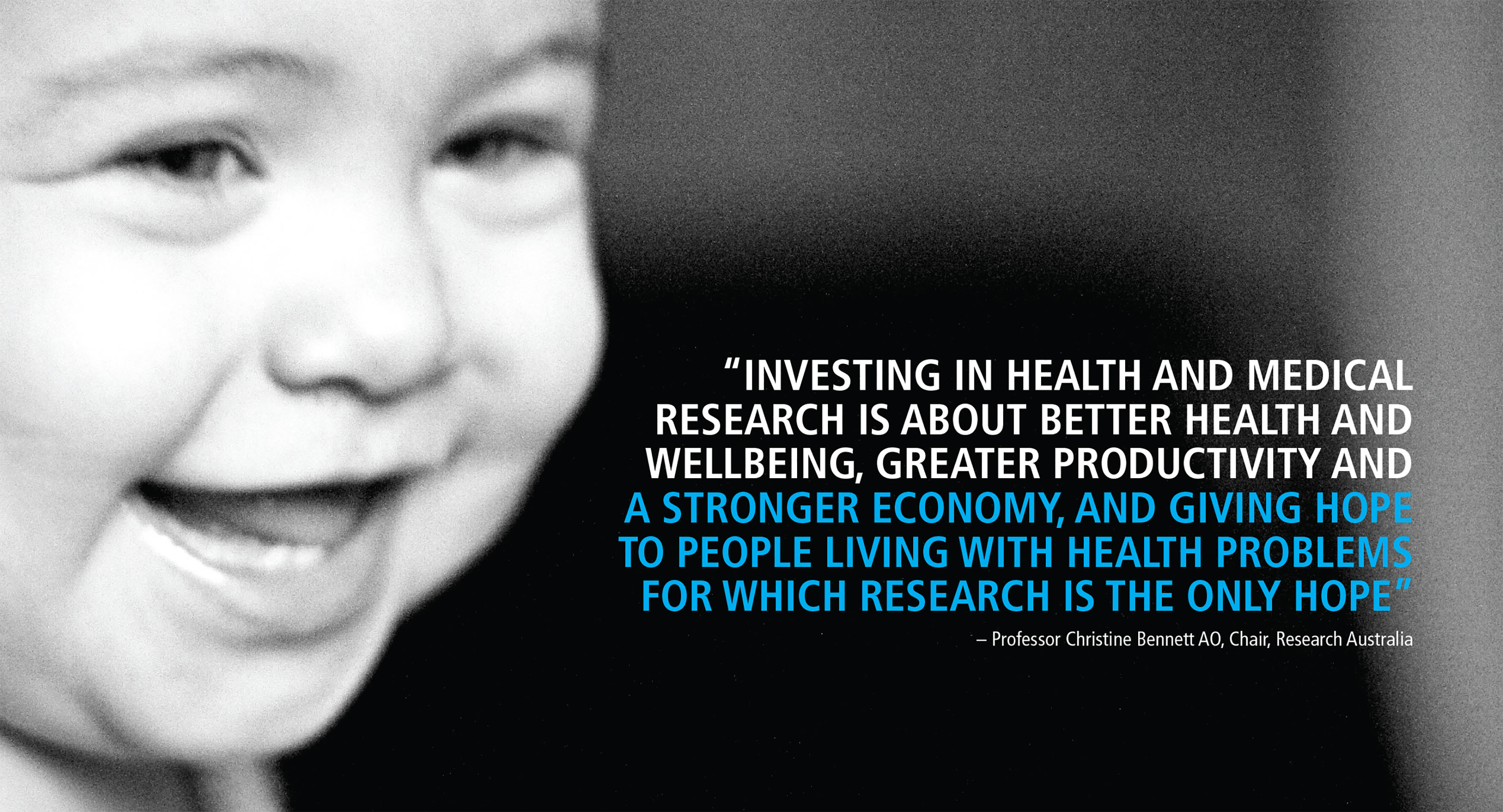Research Australia participated in consultations for the MRFF Australian Medical Research and Innovation Priorities and the MRFF Act Review. We were invited to a round table hosted by AMRAB, and provided a written submission. We recognised many positive enhancements have been suggested in the draft priorities for 2022-24. Our main concern was the lack of cohesion that links all the priorities to drive transformation across the entire health and medical research and innovation ecosystem.
RESEARCH AUSTRALIA WELCOMES MEDICAL RESEARCH COMMITMENT
Media Release 1 May 2024
RESEARCH AUSTRALIA WELCOMES MEDICAL RESEARCH COMMITMENT
The Albanese Government’s commitment to medical research today is a critical step towards underwriting the health and economic outcomes that Australians want and deserve.
Research Australia CEO Nadia Levin today welcomed the announcement, and in particular the National Strategy for Health and Medical Research which the organisation has long called for.
“Medical research is the path to a healthy Australian population and a healthy Australian economy, and today’s commitment is a critical step,” Ms Levin said.
“Health and medical research represents 23 per cent of Australian R&D activity and it needs and deserves a coordinated strategy to focus and target it.
“A strategic, national approach will guide discoveries faster to market and to the Australians who want the best possible health care – all imperative for a healthy, wealthy future.
“We look forward to working with Minister Butler to progress the National Health and Medical Research Strategy.”
Ms Levin said that the next step the Australian Government could take would be to fully utilise the funds available from the Medical Research Future Fund.
“As Australia’s peak health and medical research body, we’re pleased to see the Medical Research Future Fund supporting new missions in low survival cancers and a focus on reducing health inequities,” she said.
“The next thing the Government could do is ensure all of the available MRFF funding is flowing through to researchers.”
The Future Fund Board of Guardians determined $973 million was available for grants through the Medical Research Future Fund (MRFF) for the 2024-25 financial year, however the Federal Government has so far only budgeted for $650 million to be disbursed.
It follows 2023-24 when $870 million was available but funding actual funding was still capped at $650 million.
“The health and medical research sector has abundant capacity to immediately use every available dollar of research funding, with worthy projects and medical advances ready to be made,” Ms Levin said.
“The more we invest in medical research the better the health, policy and economic outcomes for Australia in the years to come.”
As the peak national body for health and medical research and innovation, Research Australia played a key role in the establishment of the MRFF.
Media contact: Jack Douglas 0450 115 005
Download the Media Release here.
Research Australia proposes new MRFF Priorities
Research Australia has a made a comprehensive submission to the consultation on the new MRFF Priorities 2018-2020.
Working with our broad membership, Research Australia’s approach was to start with the Strategic Platforms and examine every Priority and all the existing and proposed funding programs. We looked at how well they were aligned, where the gaps were, and what wasn’t working. Research Australia gratefully acknowledges the contribution made by our members through discussions and the exchange of ideas and proposals.
Research Australia proposes that four Priorities be retained in their current form and that a further seven be retained but amended. We also propose five existing Priorities be discontinued and six new Priorities created. Research Australia’s response to the consultation is available here.
With the consultation period now completed, the next stage rests with the MRFF Advisory Board which is responsible for developing and issuing the next Priorities. We wish the Board well with this important task and look forward to seeing the new MRFF Priorities towards the end of 2018.
Budget 2018-19 | Budget Analysis
Summary
The 2018 Federal Budget provides an optimistic forecast for Australia’s economic future, with increased revenue and several new funding announcements, as might be expected of an election year Budget. The health and medical research and innovation sectors have not missed out, with confirmation the Medical Research Future Fund remains on track to reach its capital target of $20 billion by 2020-21 and the announcement of a long list of MRFF funded projects stretching over the next decade (well in advance of the current two year funding priorities).
Consistent with Research Austrlalia’s earlier calls, including in its Pre-Budget Submission, the Government will direct $240 million of MRFF funding to a Frontier Medical Research program to develop innovative medical ideas, research devices and treatments.
A $500m Australian Genomics Health Futures Mission will help more than 20,000 Australians live longer and receive better treatment tailored to their needs.
The Government has announced plans to cap the funding available under the refundable R&D Tax Incentive at $4 million per year. While the caps will probably be more than enough for most small companies developing a new product, such a cap could have had a significant impact on small companies developing new medicines and therapies. However, the Government has heard our arguments and in a really positive development it has announced that clinical trials will be excluded from the cap. This is a great outcome for the health and medical research and innovation sector.
While there is some good news for tertiary students in rural areas with increased funding for sub-bachelor and bachelor programs and new rural medical programs in Victoria and NSW, the cuts announced last year remain.
In other news we have funding committed to research infrastructure.
Read on for more detail.
Medical Research Future Fund
$20 billion in capital by 2020-21
As at 31 March 2018 the MRFF had $6.7 billion in capital. Tonight’s budget confirms that the MRFF remains on track to reach the target of $20 billion in capital by 2020-21, with a forecast balance of $20.2 billion at 30 June 2021. $2.3 billion is scheduled to be added to the capital in the next financial year. The heavy lifting comes in financial year 2019-20, when $7.8 billion is forecast to be added to the MRFF capital balance. This is likely to be after the next Federal election.
MRFF Capital
| $m. |
17-18 | 18-19 | 19-20 | 20-21 | 21-22 |
| Capital to MRFF | 2,242.199 | 2,288.550 | 7,830.490 | 2,409.476 | Nil |
Funding from the MRFF
Forecast spending from the MRFF also remains as expected, with more than $222 million available to fund medical research and innovation in 2018-19, rising to $646 million by 2021/22, the first year after the MRFF reaches full capitalisation of $20 billion. Total funding provided by the MRFF up to and including 2021-22 is forecast to be just shy of $2 billion.
MRFF expenditure
| $m. |
17-18 | 18-19 | 19-20 | 20-21 | 21-22 |
| Funding (2018 Budget) | 143.315 | 222.383 | 392.703 | 650.236 | 645.951 |
Funding Announcements
The Budget included numerous announcements of further funding to be made in the next financial year and further years, including:
- $125 million over 10 years from 2017-18 for a Million Minds Mental Health Research Mission to support priorities under the Fifth Mental Health and Suicide Prevention Plan;
- $75 million over four years from 2017-18 to extend the Rapid Applied Research Translation program that supports Advanced Health Research Translation Centres and Centres for Innovation in Regional Health;
- $18.1 million over four years from 2017-18 for a Keeping Australians Out of Hospital program to support preventive health, behavioural economics and reduce avoidable presentations to hospital;
- $39.8 million over four years from 2017-18 for a Targeted Health System and Community Organisation Research program with a focus on comparative effectiveness studies and consumer-driven research; and
- $17.5 million over four years from 2017-18 for research into Women’s Health and research into Maternal Health and First 2,000 Days to address the underlying social determinants of health that impact on a child’s early days of life.
The Government also announced that it will provide $1.3 billion from the MRFF over 10 years from 2017/18 for a National Health and Medical Industry Growth Plan to improve health outcomes and develop Australia as a global destination for medical sector jobs, research and clinical trials. The announcements include:
- $500 million over 10 years from 2017-18 committed to the Genomics Health Futures Mission, including $10.7 million in 2017-18 for genomics research;
- $240 million committed to the Frontier Health and Medical Research program;
- $248 million for expanded clinical trial programs;
- $125 million over nine years from 2019-20 to contribute to the Targeted Translation Research Accelerator for chronic conditions focussed on diabetes and heart disease; and
- $94.3 million for biomedtech programs and industry research collaborations.
Research Australia is particularly pleased to see the announcement of the Frontier Health and Medical Research Program, which we have been calling for.
NHMRC and ARC Funding
In its Pre-Budget submission, Research Australia called for increases in funding for the NHMRC and ARC’s research programs.
NHMRC Programs
The 2018-19 Budget reveals that funding for the NHMRC’s programs is falling in real terms. Funding to the Medical Research Endowment Account (MREA) for the NHMRC’s research programs is $829 million for 2018-19. Estimates for the following three years have the funding remaining virtually stable with increases of roughly 1.5% each year. The CPI was 1.9% for the year to 31 March 2018, so in real terms NHMRC funding continues to decline over the forward estimates, as it has for several years now.
NHMRC MREA Funding
| $m. |
17-18 | 18-19 | 19-20 | 20-21 | 21-22 |
| Funding to the MREA 2018 Budget |
817.990 | 829.324 | 842.766 | 855.407 | 868.238 |
ARC Programs
The Australian Research Council’s Funding Programs are critical to Australian publicly funded research including to the life sciences and medical technologies.
Over the forward estimates, the funding to the ARC for the Discovery Program declines slightly in later years compared to the estimates in last year’s budget. The increases year on year are a little greater than the current inflation rate of 1.9%.
| $m. |
17-18 | 18-19 | 19-20 | 20-21 | 21-22 |
| Discovery (2018 Budget) |
493.858 | 495.099 | 508.965 | 516.506 | 528.572 |
| Discovery (2017 Budget) |
492.736 | 493.708 | 511.540 | 522.537 |
The Linkage Program was singled out in the Government’s National Innovation and Science Agenda (NISA) as an important component of Australia’s innovation system, and it was announced that from 1 July 2016 the Program would be open to continuous applications and decision making would be fast tracked. Funding over the forward estimates is slightly higher than forecast in last year’s budget, and shows increases of around 3% each year, around 1% higher than the current rate of inflation.
| $m. |
17-18 | 18-19 | 19-20 | 20-21 | 21-22 |
| Linkage (2018 Budget) |
266.678 | 273.990 | 285.432 | 293.492 | 297.862 |
| Linkage (2017 Budget) | 265.319 | 265.843 | 275.444 | 281.366 | N/A |
While not funding ‘medical and dental research’, the ARC Linkage program remains important to the health and medical research and innovation sectors. For example, the latest round of ARC Linkage Program grants included funding to develop bio inks for 3D printing, a better inhaler for medicines, better understanding antibiotic use, and improved brain imaging.
Research Support
In addition to providing funding for the ARC Program, the Department of Education and Training also provides funding to universities to help cover the indirect costs of research. The forecasts for the next financial year and the following two years reflect increases of around 6% per annum, flattening out to a little more than 2% between 2020/21 and 2021/22.
Research Support Program
| $m. |
17-18 | 18-19 | 19-20 | 20-21 | 21-22 |
| 2018 Budget |
923.709 | 903.425 | 959.816 | 1,018.879 | 1,042.302 |
The question of funding for the indirect costs of research funded by the MRFF continues to remain unclear. Research Australia will be investigating further whether the increase in the Research Support Program is a decision to increase the ratio at which funding is awarded, or simply accounting for an expected increase in direct research revenues, such as MRFF funding to universities.
The whole issue of indirect research costs remains an important unresolved issue for the whole health and medical research sector. Research Australia continues to call for a whole of government approach to the issue of funding indirect research costs. Research Australia proposes that the Chief Scientist lead a review of the funding of indirect research costs to establish a sustainable and equitable funding program. In the short term, MRFF funding to universities needs to be treated the same as NHMRC and ARC competitive grant funding, and the pool of funding for the Research Support Program should be increased proportionately.
Research Infrastructure
The key response to the Research Infrastructure Roadmap was a commitment by the Government to develop a Research Infrastructure Investment Plan to guide future funding. This Investment Plan has now been released as part of the Budget. A 12-year National Research Infrastructure Investment Plan will commit $1.9 billion to critical national research infrastructure, including $140 million for upgrades to the two most powerful computing facilities in the Southern Hemisphere.
R&D Tax Incentive
The Research and Development Tax Incentive is available to all companies that incur expenditure that meets the definition of eligible research and development. For larger companies that are making a profit, it provides a non-refundable tax incentive, at a rate of 38.5% of the eligible R&D expenditure (otherwise claimable as a business expense at the corporate tax rate of 30%). This reduces their tax bill.
Smaller companies, with revenue of less than $20 million are eligible for a refundable tax incentive. This tax incentive applies at the rate of 43.5% of the eligible expenditure, and is payable even if the company has not made a taxable profit. It is a direct (‘refundable’) payment to the company from the ATO.
Introduced in 2012, the R&D Tax Incentive has been a victim of its own success, with expenditure on the measure consistently exceeding Government forecasts. Relatively minor changes have been made to the R&D Tax Incentive in recent years, including introducing caps and reducing the rate by 1.5% to the current 38.5% and 43.5% but other measures were blocked by the Senate. In 2015 the Government initiated a review of the R&D Tax Incentive. Proposals by the review to better target the R&D Tax Incentive have been strongly opposed by industry. More recently the ISA’s report Australia 2030: Prosperity through Innovation (the 2030 Plan) has proposed a couple of further amendments to the Review’s recommended measures, including doubling the cap on the refundable R&D tax Incentive to $4million, and modifying the proposed intensity threshold to be applied to the non- refundable tax incentive.
In tonight’s Budget, the Treasurer has confirmed a range of measures to improve the integrity of the R&D Tax Incentive Program, including introducing a $4 million annual cap on the refundable component of the R&D Tax Incentive. Crucially, for the health and medical research and innovation sector, clinical trials will be exempted from this cap. This is a great outcome for the sector, which has argued that the high costs of taking a new therapeutic to market mean that small companies in this field would be unfairly disadvantaged by the cap.
CRC Program
Funding forecasts for the CRC Program are largely in line with last year’s budget. The program is forecast to receive $892 million over the period from 2017/18 to 2021/22.
| $m. | 17-18 | 18-19 | 19-20 | 20-21 | 21-22 |
| 2018 Budget | 160.868 | 167.341 | 184.331 | 187.540 | 192.240 |
The CRC Program is important to health and medical research and innovation with about one third of the CRCs funded over the life of the program being health-related. The most recent round of CRC funding included $55 million over 7 years for the Digital Health CRC.
Research Australia’s response to the 2030 Plan
Research Australia welcomes today’s announcement from Innovation and Science Australia (ISA), Australia’s independent science, research and innovation advisory board, calling for the Government to enhance the national culture of innovation to help drive the country’s prosperity.
We are pleased to note that the 2030 Plan, “Australia 2030: Prosperity through Innovation”, articulates the jobs of the future and skills we need to ensure Australia’s world class research can translate into global outcomes.
Research Australia has long stated that Australia has the potential to lead and create new markets by applying cutting-edge science and technologies to new, first in world applications that improve human health. However, to achieve or even entertain these possibilities, we have to be courageous and adapt our current approach to funding to reach “an economies of scale” ideal. This includes funding for areas such as machine learning and artificial intelligence, robotics and automation, high performance computing, and of course genomics and epigenetics.
While there are some questions about the Plan’s detail, Research Australia looks forward to working through them with our membership and the Government.
Research Australia is particularly pleased to see that many of the recommendations made in our June 2017 submission to ISA in response to the 2030 Strategy Issues Paper were adopted in the report, specifically the focus on frontier technologies and embedding research in Australia’s health system.
Continue reading “Research Australia’s response to the 2030 Plan”
Research Australia welcomes additional rare cancers and rare diseases research
The Government has today announced an $69 million boost in funding for research in to rare cancers and rare diseases, including $26 million allocated to 19 projects as a part of the Medical Research Future Fund’s “Rare Cancers, Rare Diseases and Unmet Needs Clinical Trials Program”. This program has been expanded from $13 million when announced last year to $26 million in recognition of the quality of the applications received.
A $10 million targeted call for research into rare diseases and cancers is expected soon, and an additional $33 million will be made available in the next financial year to further expand research in this area.
Research Australia welcomes the additional funding, and recognises the importance of funding for these areas which impact many Australian families.
Last year Research Australia made a submission to the Senate Select Committee Inquiry into Funding for Research into Cancers with Low Survival Rates, which you can read in full here.
You can keep a track of all of the Medical Research Future Fund funding announcements here, or click here to read the Minister for Health’s full statement on today’s funding boost.
Budget 2017-18 | Budget Summary
Overview
- First funding allocated from the Medical Research Future Fund- $65.9 million
- MRFF to reach $20 billion in 2020/21
- NHMRC Funding continues to flatline
- ARC Funding is also in slow decline
Continue reading “Budget 2017-18 | Budget Summary”
Federal Medical Research Plan: The Health & Economic Roadmap We Need
Media Release: Wednesday, 9 November 2016
Link to the MRFF Strategy & Priorities.
With almost two in three Australian adults and one in four children overweight or obese, two-thirds of Australians over the age of 50 with poor bone density, and one in six Australians with chronic back pain, tonight’s release of the Medical Research Future Fund (MRFF) Strategy sets out the roadmap for addressing some of our biggest health issues.
That is the verdict from the medical research community and Research Australia, the organisation behind the virtual doubling of health (NHMRC) funding in 2000, and again in 2005.
“As the organisation that has been championing health and medical research for the last 15 years, we can tell you the MRFF is a real game changer,” said Research Australia Chair, Dr Christine Bennett.
CEO of Research Australia, Nadia Levin said the MRFF Strategy’s vision of a health system informed by quality research is exactly what’s needed.
“Research Australia shares the Strategy’s vision of a health system fully informed by quality health and medical research,” said Levin.
Continue reading “Federal Medical Research Plan: The Health & Economic Roadmap We Need”
New poll with new message for new Government: Australians want to see medical research prioritised and medical breakthroughs a reality
Media Release: Monday 5 September 2016
A new poll released has revealed 87 per cent of Australians support the Federal Government’s Medical Research Future Fund (MRFF).
The Roy Morgan Research poll conducted for Research Australia, also shows 78 per cent of Australians believe the MRFF will lead to better health outcomes.
“It is clear there is significant support for the Medical Research Future Fund and Australians want to see it become a reality,” said CEO of Research Australia, Nadia Levin.
$1.277 billion transfer for Medical Research Future Fund: Australian Government puts innovation money where its mouth is
Media Release: Friday 26 August 2016
Australian health and medical researchers have welcomed a significant step to secure Australia’s health and medical research future.
The transfer of $1.277 billion to the Medical Research Future Fund Special Account is being read by the sector as words in action.
“This is Prime Minister Turnbull and Health Minister Ley doing exactly what they said they would do – build our health system and build an innovation nation,” said CEO of Research Australia, Nadia Levin.









